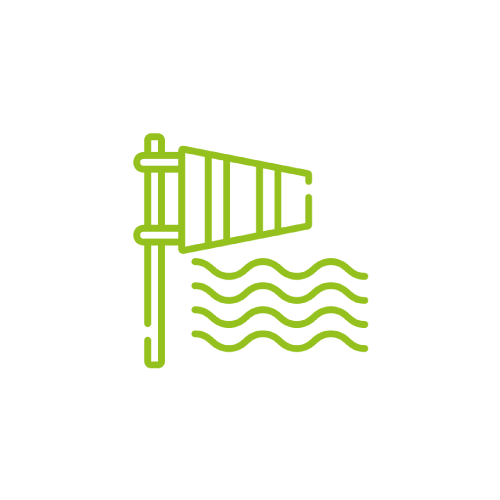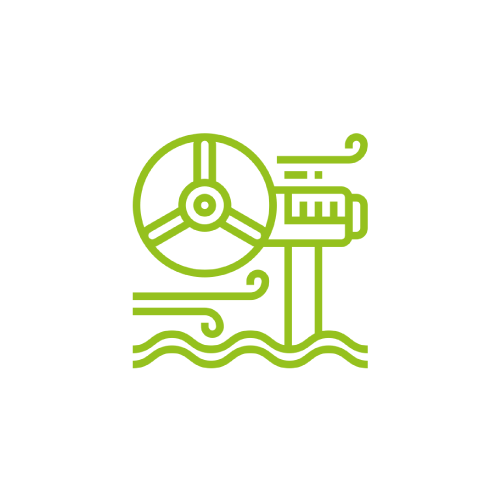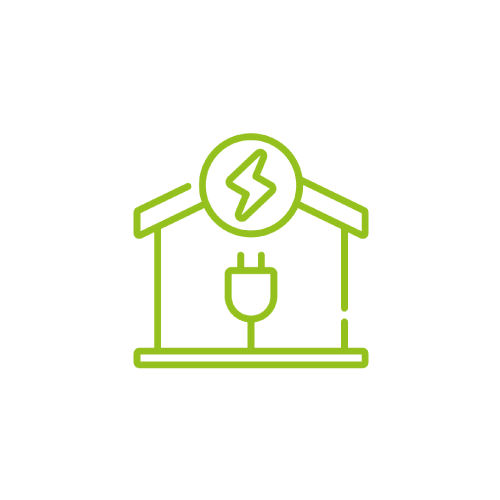an offshore wind farm works
Wind is an inexhaustible resource whose intensity varies depending on location. The identification of sites well exposed to winds is therefore an essential prerequisite for any wind farm installation. Wind turbines are designed to adapt to the physical constraints of a site and wind speed.

Everything starts from the wind which turns the blades
Wind turbines transform wind energy into electrical energy. The wind turns the rotor, made up of the blades and the hub . It constantly orients itself to face the wind.

The blades drive a generator
Thanks to the more constant sea winds, offshore wind turbines have a higher efficiency than land wind turbines, the generator makes it possible to produce electricity.

Electricity travels via a network of underwater cables
The wind turbines are connected by a network of cables to the electrical substation, which transforms the electricity produced into 66 kV to inject it into the terrestrial network at 225 kV.

Electricity joins the terrestrial network
It is carried via an underwater evacuation cable to a landfall junction and then to the connecting electrical substation, before supplying power to your home.
The hub , also called “nose”, is generally a cast piece of steel.
It supports the rotor blades and mounts on the slow input shaft of the multiplier. It is equipped with a regulation system which allows the pitch of the blades to be modified. The hub is designed to allow access for technicians directly from the nacelle.
